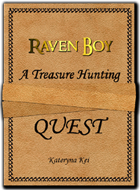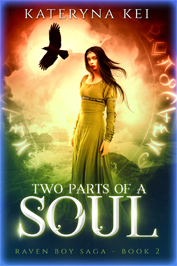Swords and smithery
The sword that Hrafn inherited from his father, the great konungr
Torgeir, was rare and exceptional.
Sveinn’s father, Azad, a blacksmith from Persia, made it.
The sword had a single-handed hilt with a heavy
lobbed pommel that perfectly balanced the blade, giving it great
agility. The blade was straight and double-edged; it guaranteed its
wielder long reach, nice versatility and accurate placement of the
thrust in a straight line. It also was very effective against a heavily
armed adversary.
To make the blade, Azad used the exact technology of the legendary Damascus steel. Blades made of this steel were exceptionally tough, sharp edged and resistant to shattering. Distinctive patterns looking like flames or flowing water were the most obvious characteristic of this steel.
By combining steels with different carbon consistency, blacksmiths were able to control the physical properties of the final material. For instance, iron is generally soft and easy to bend, while high carbon steel is hard and resilient. By combining both, it is possible to get rid of their original drawbacks. Thus, great blades were made by alternating the layers of high carbon steel and low carbon steel: soft iron layers would provide resistance against shattering, while high carbon layers would make the blade sharp, tough and resilient.



